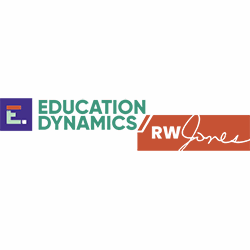Effective media relations counsel goes far beyond managing a bad press cycle or pitching feel-good stories. It’s about cultivating lasting, meaningful connections with outlets and reporters that can pay dividends even years after that initial contact.
In higher education, media relations is a bridge between scholars and campus leaders and the broader public, ensuring institutions’ missions to spread knowledge and seed innovation reach audiences far beyond academia. In a moment when the role of universities in society is facing relentless scrutiny, that function has never been more vital.
Because much of the maneuvering involved in media outreach happens out of view, the work can sometimes be misunderstood or undervalued. Yet when done right, proactive media relations can make a critical difference in enhancing or revitalizing an institution’s reputation and brand and satisfying key stakeholders like alumni, parents, faculty, and trustees—all while expanding research impact and shaping future discourse.
What sets proactive media relations apart from reactive media relations or its rowdy cousin, crisis communications? In an ideal situation, they are sides of the same equation. Both matter, both deserve attention and resources and one without the other leads to image imbalance. If colleges and universities only engage with the news media in times of controversy or strife or when directly sought out by journalists, they are obliquely allowing others to tell their stories. By that token, proactive media relations is a powerful opportunity to reclaim ownership of the narrative and show the world what makes your people and programs shine.
Refining the right approach for an institution isn’t easy. It’s a science and an art. Here are a few ways to unleash the potential of proactive media relations in support of your strategic priorities.
Creating Pathways to Meaningful Partnerships
At its core, proactive media relations is a subtle form of matchmaking. Often, it involves pairing the perfect faculty member or administrator with the right reporter at just the right time to build those mutually advantageous relationships. When these connections click, they spark more insightful articles, op-eds and interviews that not only inform but also showcase the institution’s brain trust and prompt reporters and editors to return for more.
In other words, a well-placed quote in a major publication does more than amplify research, contextualize breaking news or clarify complex issues: It opens the door to ongoing dialogue with the reporter, positions the expert as a trusted source for later coverage and lands the university on fellow journalists’ radar.
Impact: Institutions that actively pitch ideas and foster relationships with the media extend their influence and guide public perception on relevant topics.
Harnessing the News Cycle
Proactive media relations often begins with a compelling story or a fresh perspective—but equally important is knowing when, where and how to share it. The pace of modern news cycles is fast and unforgiving, and rising above the fray is a constant challenge. That’s why success so often hinges on a careful blend of strategic foresight, rapid reflexes, a sharp sense of what makes something newsworthy and more than a sprinkle of luck.
This means, among other things, staying on top of the academic calendar, regularly checking in with your roster of experts, and continuously monitoring current events for favorable angles.
Impact: Keen news instincts and a deep understanding of the rhythm of media relations increase your likelihood of breaking through the noise and leaving your institution’s mark on high-impact discussions.
Elevating Expert Voices and School Profile
While increasing faculty and administrator visibility is an admirable objective, the first step is making sure they are ready for the spotlight. Speaking to the media is a skill, and it takes practice. Scholars and researchers who are revered in their fields or college presidents accustomed to addressing donors and cabinet members may require significant cross-training to translate lofty concepts into plain language suitable for a general audience.
Media training and interview preparation equip experts to give concise responses, avoid jargon and navigate tough questions. Ultimately, the goal is to communicate in a way that will resonate not only with reporters but with their readers, listeners and viewers who may not have advanced degrees. Also, not all interview formats are created equal. From live on-camera appearances to email Q&As, different people thrive in different settings.
Impact: Not everyone is innately media-savvy, but that does not mean they cannot learn. Never pitch an expert who is not confident, well-versed in the subject, or comfortable with the interview style. Always encourage them to think through their main message in advance and then provide them with the tools to stick to it.
Media Relations as Institutional Storytelling
Beyond individual placements, proactive media relations efforts come together to reinforce the themes an institution seeks to uphold. Every positive mention, guest essay or radio segment feeds into an overarching narrative about what the university stands for—its values, strengths and contributions. A well-executed media strategy shows rather than tells, mobilizing external affirmation to complement the kinds of content institutions produce about themselves.
Impact: Touting academic excellence on a webpage is one thing; writing an internal story about student-faculty research for the website or alumni magazine is another. Seeing a faculty expert routinely quoted in newspapers of record further underscores credibility and prestige. It becomes earned, third-party validation.
The Invisible Hustle That Makes It All Work
Of course, proactive media relations isn’t all headline hoopla and academic accolades. Much of the real work happens behind the scenes, in the trenches of text threads and email chains, nurturing relationships, scanning for trends, drafting pitches, coordinating time zone logistics and following up on leads. It can be a long process that demands patience, persistence and a clear focus on tactics, strategy and institutional priorities.
Impact: Amplifying unique and inspiring stories that shape the conversation is hard work, especially in the current media landscape, yet it’s worth it.
Are you looking to take your media relations strategy to the next level? Let’s talk.





